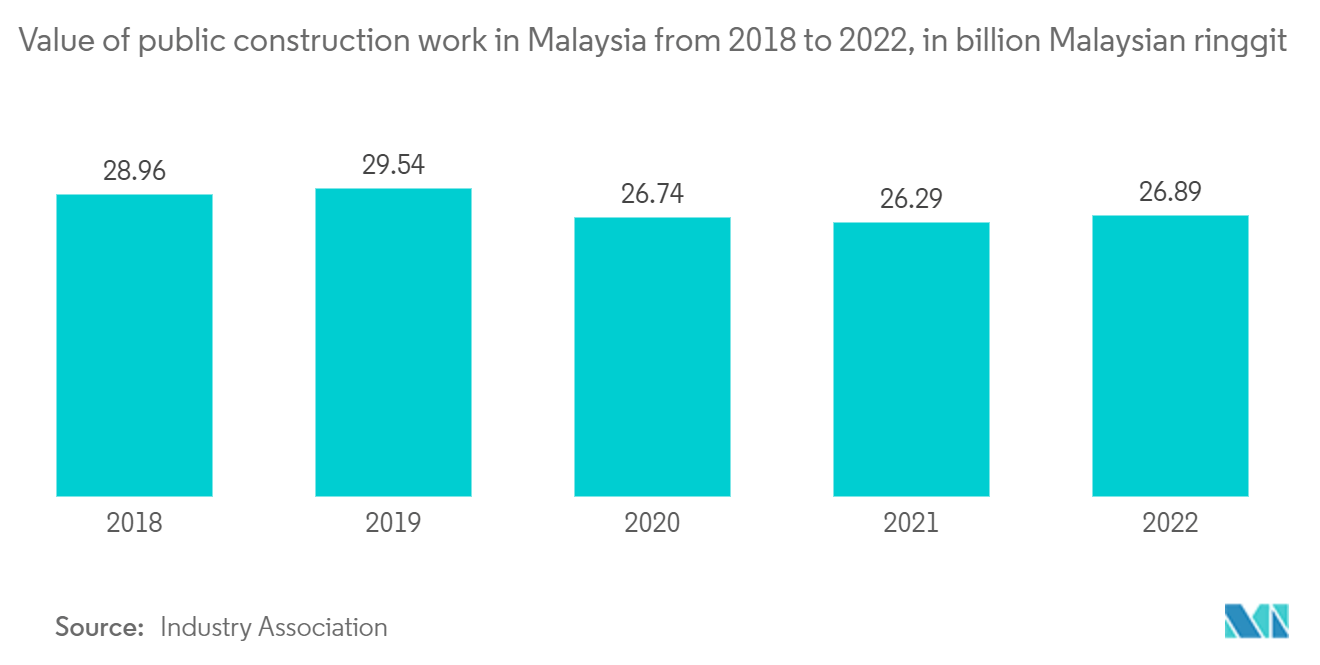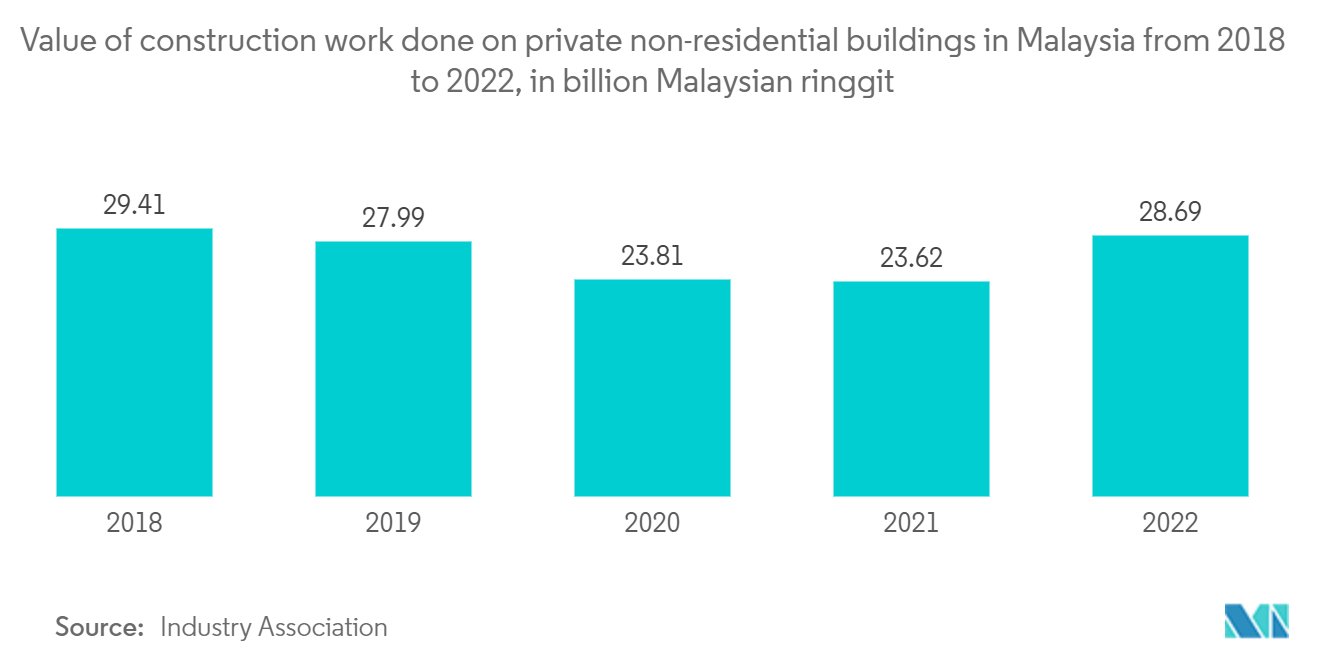Market Trends of Malaysia Commercial Real Estate Industry
Rise in growth in retail sector
Post-pandemic structural trends in the country's commercial real estate (CRE) market will likely exacerbate already-existing imbalances. This is because vacancy and rental rates of office and retail spaces have gotten worse since the pandemic outbreak and may take longer to get better due to the structural changes seen. In Malaysia's real estate market, the value of the massive transactions grew 61% QoQ (MYR 1.13 billion (USD 0.25 billion): Q4/2021) to over MYR 1.82 billion (USD 0.48 billion).
According to Savills, the most significant transaction occurred in Kuala Lumpur, when Hap Seng Consolidated Bhd paid MYR 868 million (USD 195.83 million) to acquire a vacant 15.3-acre commercial site on Jalan Duta from TTDI KL Metropolis Sdn Bhd (a wholly-owned subsidiary of Naza TTDI Sdn Bhd). It is to construct a mixed-use development with a projected gross development value of MYR 8.7 billion (USD 1.96 billion).
In 2021, the value of construction work grew by -5.0% to MYR 112.0 billion (USD 25.27 billion) compared to MYR 117.9 billion (USD 26.6 billion) in 2020. Budget 2022 announced that the government would invest MYR 2 billion (USD 0.45 billion) in guarantees to banks via the Guaranteed Credit Housing Scheme. It is aimed at assisting those in the gig economy, people with funds to pay for loans but who cannot produce an income statement because they do not earn in the traditional sense.

Increase in government spending in private sector
In its 2021 budget, the Malaysian government announced a Protection of People and Recovery of the Economy (PEMULIH) aid package to support construction businesses that may benefit private companies. It includes the allowance of price changes or Variation of Price (VoP) for government projects. It follows a significant increase in the cost of building materials and assistance for local G1-G4 contractors to carry out small-scale government projects by conducting lottery and tendering processes. It also enables the use of new civil engineering and building and electrical work rate schedules and the allowance of Extension of Time (EoT) or extension of contract on government projects for supply and service contracts affected by the implementation of the Movement Control Order (MCO) subject to a contract clause.
The private sector continued to propel the construction activity with a 58.7% share of the value of construction work done MYR 16.2 billion (USD 3.87 billion) as compared to the public sector with a 41.3% share of the value of construction work done MYR 11.4 billion (USD 2.72 billion). The value of construction work done in residential and non-residential building subsectors remained significant in the projects owned by the private sector, which contributed 37.9% and 37.1%, respectively. Meanwhile, the project owned by the public sector remained underpinned by the Civil engineering subsector with a share of 69.4%.


